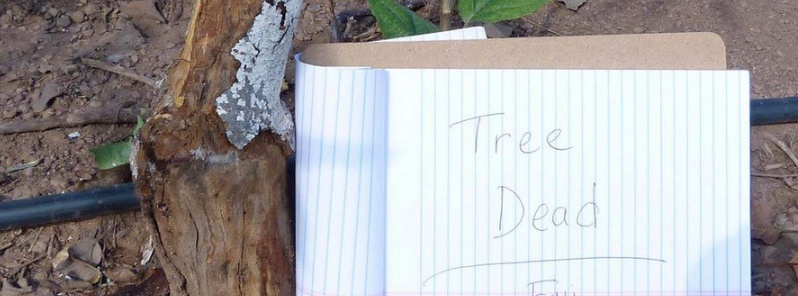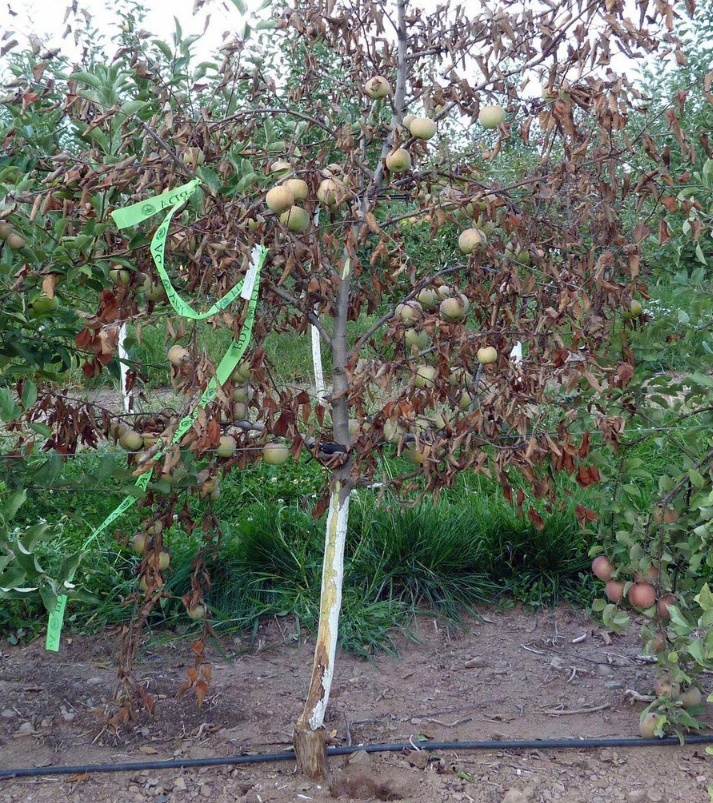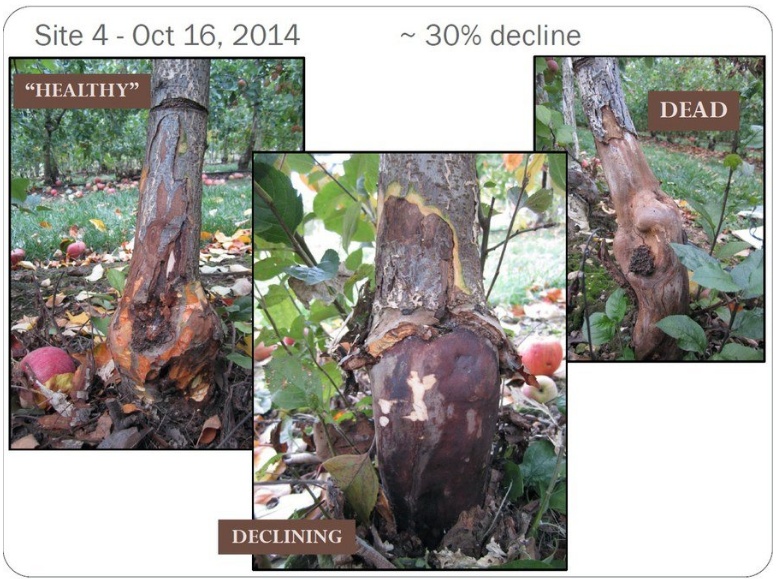Rapid Apple Decline – massive die-offs of young apple trees across Northeastern U.S. and Canada

An unknown disease now called Rapid Apple Decline (RAD) and Sudden Apple Decline (SAD) is affecting young apple trees across Northeastern U.S. and neighboring parts of Canada, causing massive die-offs. The problem was first recognized about 8 years ago. The most plausible hypothesis is winter injury caused by severe temperature fluctuations.
The problem has been recognized across America's north-east, in North Carolina and in Canada. Science magazine reports that up to 80% of North Carolina's orchards may have been affected.

Image credit: Kari Peter, PSU
Kari Peter, an assistant research professor in tree fruit pathology with Pennsylvania State University, was one of the first to sound an alarm after observing in 2013 what’s now called Rapid Apple Decline and Sudden Apple Decline because of the short period from the time the first symptoms appear to tree death.
The diagnostic characteristics are as follows:
- A block can have a mix of dead, declining and healthy trees dispersed fairly evenly throughout a block.
- Young (2 – 8 yr), dwarf trees are most susceptible (to date, semi-dwarf rootstocks have not been associated with this issue); multiple varieties and rootstocks (M9 most affected).
- The graft union is affected: severe shedding of bark around graft union and cankers are present.
- Necrosis begins at the graft union and it proceeds up the trunk of the tree.
- Affected wood is usually solid and not spongy.
- The rootstock is healthy, as indicated by many rootstock suckers present, as well as a healthy root system.
- The leaves on the trees begin to look pale yellow, then reddish (indicating tree girdling), and within two weeks the tree can be dead.
- Trees can collapse with a full load of large fruit.
- Total collapse of the trees has been observed from late July through September.

Image credit: Kari Peter, PSU
"If you talk to many folks, winter injury is the ultimate cause for RAD," Peter said.
"The trees became weakened due to the stress (severe temperature fluctuations) of winter and ultimately became susceptible to weaker diseases that caused the tree to decline and die. This is a very plausible hypothesis since our 2014 and 2015 winters were exceptionally challenging. However, I question this theory based on my own observations in my problematic apple block."
"This is a very tough, serious, costly issue and it most likely will take some time to get to the bottom of the problem. A lot of minds in the industry are working together to figure this out," Peter said.
Featured image credit: Kari A. Peter, PSU

Commenting rules and guidelines
We value the thoughts and opinions of our readers and welcome healthy discussions on our website. In order to maintain a respectful and positive community, we ask that all commenters follow these rules.